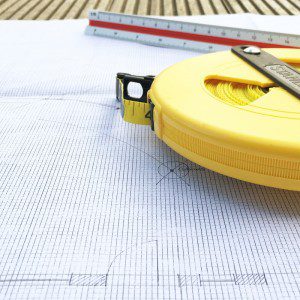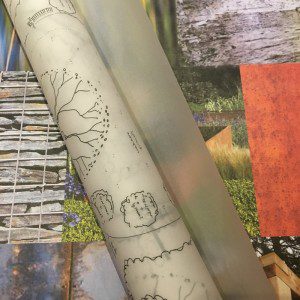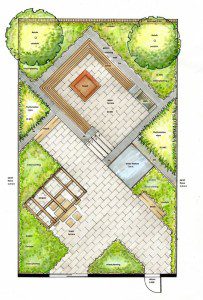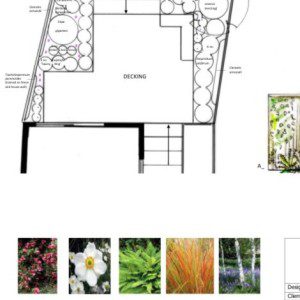I will create a design focused on your life, rather than applying a ready-made solution.
The design process is a collaborative approach. The first step is to get to know you, your goals and your project. This informs the design. I can produce a full design, and help you to find and manage the right landscapers to build your new garden. I can also help to revamp an existing, established garden, or refresh planting in specific areas. Throughout the design process I will keep in contact with you, updating you on progress, and I will also be available for site monitoring throughout the build.
Please see below for a guide to the process for a full garden design – and don’t hesitate to contact me on terka@terkaacton.com with any questions you may have.
1. Garden Design Consultation
Booking a garden design consultation is a great way to get started, whether you’re considering a full garden makeover or just thinking about options.
If you know that you want a stand-alone garden consultation, please visit this page for more information. If you are interested in commissioning a garden design, please read on.
I will listen carefully to your ideas and hear about what you love about your garden – and what you’d like to change. I’ll walk around your garden and assess it from a design perspective, looking at the possibilities and limitations of the site, considering aspect, levels, soil structure and access. We’ll talk about how you use the garden, and the particular style or feel you would like to create. If it’s a family garden, we’ll involve everyone: it’s vital that the garden has the scope to engage everyone, and to grow with changing needs. If you have any images of gardens or planting styles that you would like to include in the design process, this is the perfect time to share them.
I will share my portfolio and explain the garden design process, so you have a full understanding of the stages involved. If you would like to progress to one of my other services, we can talk through how these would work. Following the meeting, I will draw up a brief for the design of the garden based on our discussions, along with a quote for the design services required.
2. Survey and Site Analysis
A site survey and analysis is necessary to record all of the relevant inform ation to consider in the design, and to produce a scale plan of your garden.
ation to consider in the design, and to produce a scale plan of your garden.
The survey and site analysis involve measuring and photographing the site, and noting its characteristics: these include setting, levels, soil type, drainage, aspect, light and shade, views and existing plants. The wider environment – including local building styles, habitats and native plants – is also assessed. This survey provides an accurate basis for the design stages.
A large or complicated site may require a chartered surveyor.
3. Outline Plan
The outline plan is the design proposal, based on the brief. It shows the overall layout of the garden, and the relationship between hard landscape and planted areas.  It also includes indications of materials and planting styles, and a moodboard is supplied. We will discuss this plan, and come to decisions on construction details such as paving and other materials which will be included in the next phase. Once the outline plan is approved, detailed design work will start.
It also includes indications of materials and planting styles, and a moodboard is supplied. We will discuss this plan, and come to decisions on construction details such as paving and other materials which will be included in the next phase. Once the outline plan is approved, detailed design work will start.
4. Presentation Plan
The presentation plan is a scale drawing of the layout for your garden, showing areas of hard landscaping, planting and features.
The design will combine the aesthetic and practical
considerations outlined in the brief to make the most of your outside space. To help you visualise your new garden, views from different angles can be created.
5. Planting
I design planting scheme to suit the particular growing conditions of your garden, to complement the design, provide year-round interest and create the atmosphere you desire. A planting plan will be prepared showing the position of each plant, its species and cultivar name as well as the quantity required. Planting schemes can include both ornamental and productive plants for borders, and vegetable gardens. A plant schedule detailing the quantity and size of plants required will be prepared to send to recommended nurseries.
I can also supply carefully chosen, high quality plants and plant them for you. Once the plants have arrived on site I can set them out and arrange planting for you. The physical planting phase is really important and I like to be closely involved – it’s good to know that the plants are in the right places and planted properly for the best possible start in life.

6. Choosing your landscaper
I don’t have an in house landscape team, but work regularly with a select team of landscape contractors who build my designs to a high specification. I am also happy to work with other landscapers and contractors.
7. Project Monitoring
Once you have chosen your contractor and the build gets underway, you can opt for me to make regular site visits to ensure that your garden is delivered as planned. Project Monitoring involves me conducting site inspections at appropriate intervals during the build, as agreed with you. The purpose of this is to ensure that the design is adhered to, and to address any unforeseen issues on site.
Project management is a more comprehensive service that would be undertaken by someone trained in this role. This role is typically only required on commercial projects and larger landscape projects.
Terka came up with a great design for our 80 foot garden – a really good understand
ing of balancing different materials, textures and plants. We particular ly liked her willingnes s to incorporat e our ideas while making a strong case for her own which made for a good working relationsh ip. Terka’s recommenda tion and rapport with the landscaper have left us with a lovely garden. Philip Davies, Finsbury Park